Last Chance to Catch NYC's Holiday Notalgia Train
We met the voices of the NYC subway on our nostalgia ride this weekend!


The coolest museums in New York City are hard to narrow down. There’s always something to experience in New York City that most may only witness once in their lifetime, whether it’s a hole-in-the-wall cafe, a Broadway show, or perhaps one of the coolest museums in the world. Visitors tend to appreciate the city’s many arts institutions, such as the Metropolitan Museum of Art, the American Museum of Natural History, the New York-Historical Society and mahy more, which are absolute must-visits Still, not very many people have not heard of or explored more under-the-radar museums in New York City, leaving plenty of opportunities to plan an enriching trip to see, for example, street art or Indigenous art. Here are top 22 of the coolest museums in NYC (in our humble opinion!)
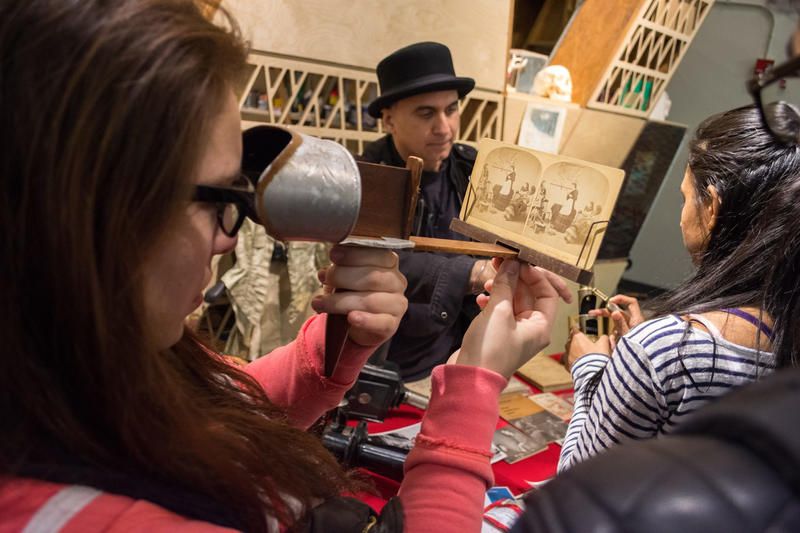
Kicking off our list of the coolest museums in NYC is a museum that comes to you! The Museum of Interesting Things is a traveling interactive and exhibition intended to educate and encourage audiences young and old to get up close and personal with items long before our current age. Audiences can engage by touching the items to fully understand how such collectibles worked in the past. It all began when founder Denny Daniel wanted to use his own collection of hundreds of antiques and memorabilia over the course of freelancing, showcasing some of his own work at the Chelsea Art Museum.
The museum is educational, working with various age groups from young students to senior citizens. They’re also flexible with their creative pursuits and travel to schools, libraries, parties and just about anywhere. They also hold general Speakeasy events including comedy and dance parties. For booking of their incredible services, take a look at their website!

The beloved City Reliquary Museum opened in 2002 in Williamsburg. Founder Dave Herman used his apartment window as a display of his collected items. While onlookers passed by, they would press a button while Dave spoke about each item they saw. The museum is also a civic organization that has rotating collections, artifacts, and annual cultural events. Generous patrons donate every year to help keep the museum afloat, showcasing that New Yorkers love this rare little gem.
For those who want to explore an intimate and historic side of New York, this museum is just the key. The quirky and unthinkable are featured here, including the last wooden sidewalk in New York, an Empire State Building coffin, and just about anything related to New York.
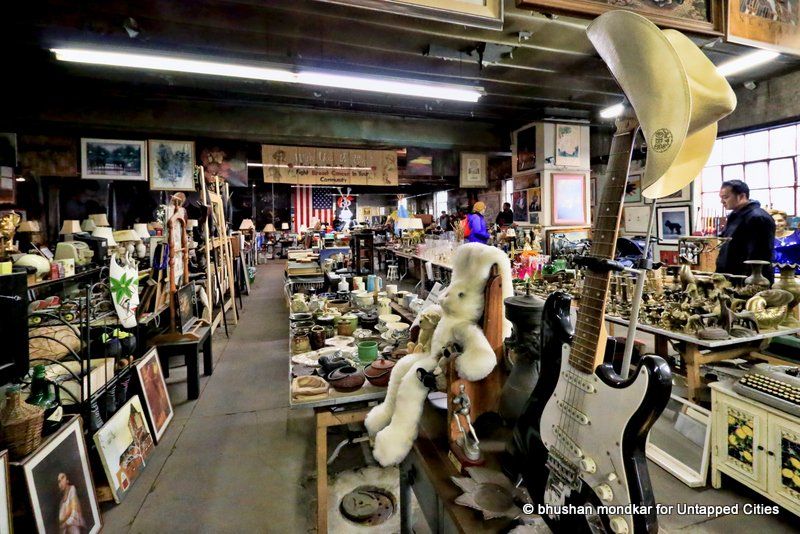
Located in an East Harlem garage on the second floor is one of the most unheard-of art galleries in New York City, the Treasures in the Trash Gallery. Sanitation worker Nelson Molina collected the antiques and artworks over 33 years from his job at the NYC Department of Sanitation. Molina started collecting around the time he joined the department, and more than 90% of all the pieces have be collected from Manhattan District 11 between 96th Street to 110 Street and between 1st and 5th Avenues (Molina’s route). The collection grew over time and he started categorizing all the pieces together. In the gallery, you can see a variety of things from door knobs to train sets, watches, chinaware, toys, paintings, and chairs, The whole space is brilliantly organized, each table following a theme. Incredibly, many pieces are still in working condition, from an old projector from the silent films era to dolls and toy trains and gym equipment.
With possibly over 1,000 items in the collection, visitors can toys, posters, ceramics, cameras, paintings and memorabilia. He began picking as a child in the 1960s while growing up in the Jefferson Housing Projects. His passion is ever-growing as he plans to expand the gallery and a foundation has been created to support efforts to make Treasures in the Trash a permanent museum, but the collection is not open to the general public.
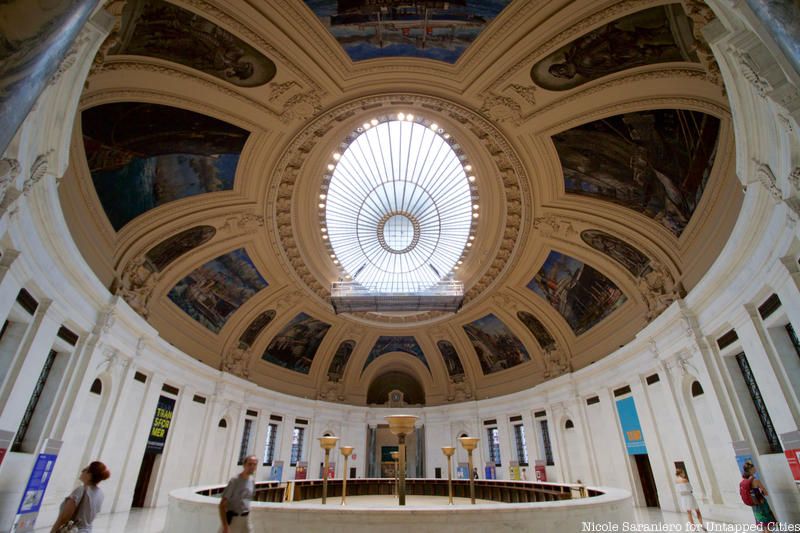
Belonging to the Smithsonian Institute, the National Museum of the American Indian holds one of the world’s most significant Native American artifact collections including photographs, archives, and other media from the Western Hemisphere, the Arctic Circle, and Tierra del Fuego. It provides a haven for Native voices and culture preserved in its unique research centers, where anyone can learn about the history of the tribes that lived there through books and “hands-on discovery boxes.” The George Gustav Heye Center is home to exhibitions, education, and performing arts programs.
The museum is filled with history and intriguing secrets, such as that the institute was built on the original site where New York colonial rule began. First, the site began as Fort Amsterdam as a place to defend New York, then known as New Amsterdam. The building is a work by architect Cass Gilbert and is a sight to behold on its own, with tiling inside by Guastavino. The marble in the walls comes from a few different states, and the last bit of Swiss marble worldwide is featured inside its columns. The museum’s expansion also includes the Diker Pavilion for Native Arts and Cultures, where performances and discussions are held. Take the 4 or 5 train directly off the Bowling Green stop. You can also take the Q and get off at Whitehall South Ferry station.
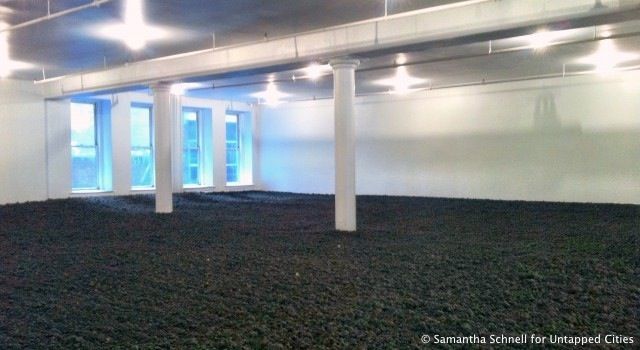
Since 1977, Bill Dilworth has been the caretaker of The Earth Room, an art installation and soil haven created by Walter de Maria in Soho. De Maria installed 28,000 pounds of dirt into a SoHo loft, and it has remained there since. The Earth Room provides solace from the outside chaos of New York City, just by breathing in a fresh scent of soil.
The bed of soil expands over 3,600 square feet, measures 22 inches deep, and is perhaps one of the most expensive real estate pieces in New York City. Walter de Maria also created two other Earth Room installations, one in Munich in 1968, and the other in Germany in 1974, but both no longer exist. This is a rare delight to discover at 141 Wooster Street.
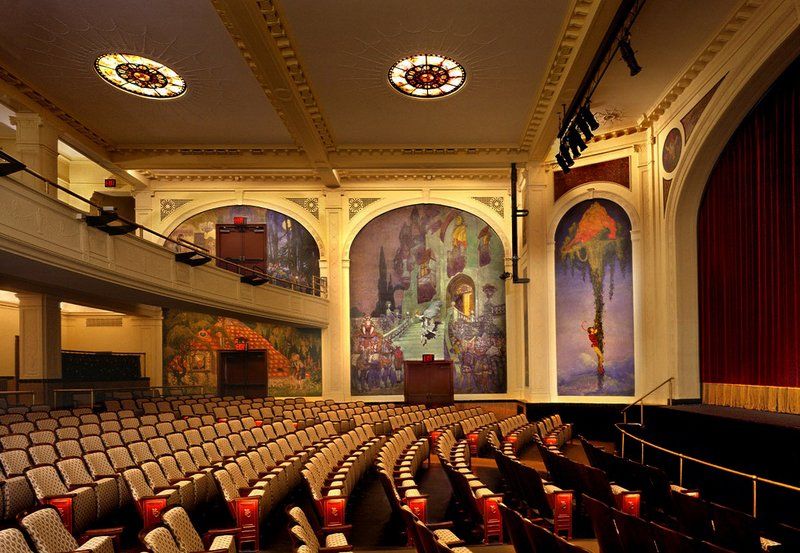
Founded in 1969 by Raphael Montañez Ortiz and Puerto Rican activists and artists, El Museo de Barrio has preserved and featured art by Latin American and Caribbean artists. The museum includes an extensive collection of 8,000 Latin American, Caribbean, and Latino artifacts that span over 800 years. Artifacts include many from the Taíno tribe and many media forms such as paintings, drawings, film, photography, documentaries, prints and sculptures. El Museo de Barrio instills a robust foundation in self-identity and self-esteem for the Latin American and Caribbean communities and cultures.
For the first time, the museum introduces “Estamos Bien-La Trienal,” a national survey of Latinx art interwoven with 42 Latin American and Indigenous artists whose art speaks out about the social system. Dominican artist Lizania Cruz‘s exhibit “Obituaries of the American Dream” (inspired by a New York Times article), shows newspaper stacks filled with immigrant testimonies of living in a country that promises them commitment but has failed them. The expression of real stories, such as “The Strangest Fruit” by Vincent Valdez, focuses on often overlooked issues such as the lynching of Mexican-Americans. The museum’s location, right in Museum Mile, is at 1230 5th Avenue at 104th Street.
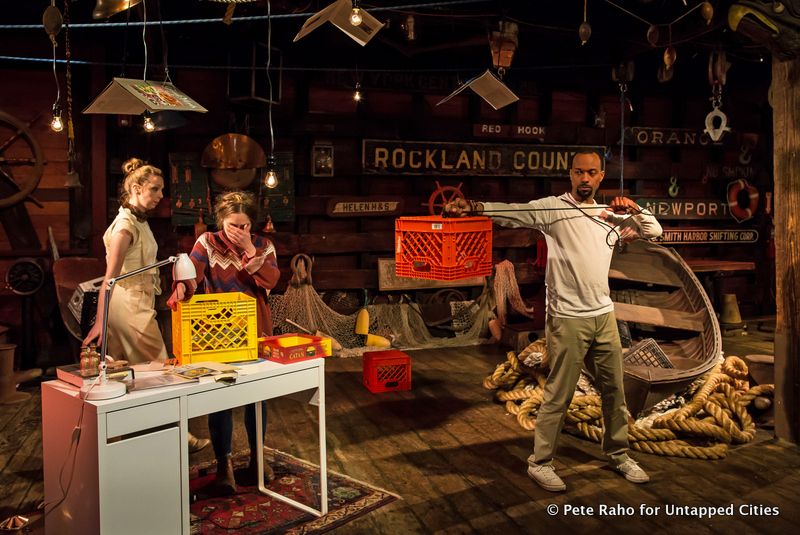
Founded in 1986, The Waterfront Barge Museum is home to the 100-year-old Lehigh Valley No. 79, the only existing barge in the world today generally left open to the public. New York was known for transporting goods in barges, the essential fuel for New York’s economy. The museum educates visitors about life on the barge by showcasing the living chambers and stevedore’s tools. It operates afloat, and during the summer, it even travels to other boats using a tugboat, much like a traveling exhibition.
In 1994, the museum relocated to Red Hook as its permanent home. Visitors can see old signage from New York’s harbor, ring ancient bells, and enjoy revolving marine art. Open boat tours are once again available, as well as virtual barge tours online. The museum also hosts classes, exhibits, and concerts.
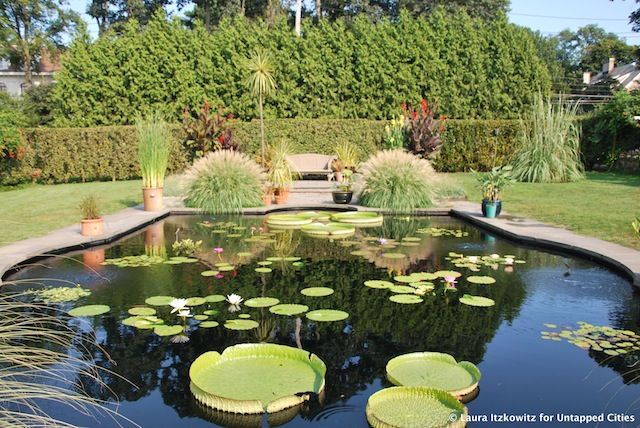
Wave Hill is located in Riverdale in the Bronx. Opened in 1965, this outdoor museum is home to a vast 28 acres of gardens and more than 4,000 various trees and plants. There are also greenhouses and eight acres of forest. Wave Hill House was built in 1843 by William Lewis Morris, the grandnephew of Lewis Morris who was a signer of the Declaration of Independence.
The Morris family was said to enjoy the view of the Hudson River at Wave Hill. Eventually, Theodore Roosevelt was brought to the estate by William Henry Appleton, a well-rounded New York publisher. Roosevelt was leased the estate in hopes of improving his bronchial health, which inspired him to create the “national parklands.” This beautiful museum is located at 4900 Independence Avenue in the Bronx.

Originally known as 5 Pointz, the Museum of Street Art in Queens is known worldwide for its graffiti art. When it became whitewashed in 2013, citizenM, a hotel chain, and investor contacted the 5 Pointz collectives in 2016 to find a way to get it back. Now, the museum spans the entire floor staircase belonging to citizenM’s New York Bowery Hotel. Here, artists have come together to create and revitalize their craft in this 20 story stairwell. The experience begins with the “Vertical Love Letter to the Lower East Side” installation inspired by neighborhood icons. What follows after is each floor showing work from individual artists and belong to the 5 Pointz and are from seven different countries. Mural by “Meres One” (Jonathan Cohen), founder of the 5 Pointz Aerosol Center, is similar to glass-stained windows often seen from churches in the Lower East Side neighborhood. This mural represented a “rebirth” to the artist after the loss of the original 5 Pointz.
Cloud M, the rooftop that opens the exhibition, is a revision of the original roof at 5Pointz, that includes the logo and names of several graffiti writers who have since passed away. The 19th floor shows Colombian artist Christian Cortes, a depiction of the old Bowery train station, and ends with a clean and small building of the 5 Pointz to reminisce where they were before and where they are now. Californian Elle’s RuPaul mural shows “two faces” of RuPaul and Charles, paying tribute to the icon who began their career partying in the Lower East Side. Along with these three remarkable artists are 18 more extraordinary artwork to check out!
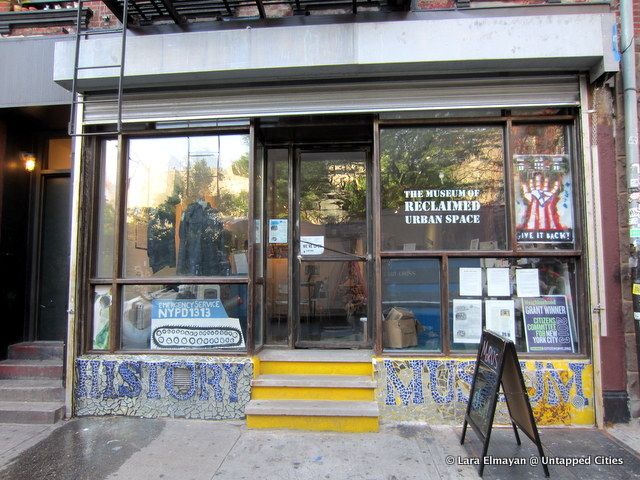
The Museum of Reclaimed Urban Space is a not-for profit museum dedicated to archiving community gardens, squatting and grassroots environmental activism of the Lower East Side. The Museum of Reclaimed Urban Space is dedicated to the art of rebellion, environmental awareness, and the neighborhood’s artistic innovations and beyond. The museum is a reminder that the past isn’t exactly gone, and for DiPaola, that means active environmentalism is very much needed today.
The museum takes honest looks back on grassroots movements, like when protesters occupied Wall Street to produce electricity using a bicycle-powered generator, or when people set out in the street after Hurricane Sandy for cell phone charging. Passionate volunteers, donations, grants, and events the museum holds, including their fashion show, keep the museum running today. Visitors can also take in-depth walking tours of the East Village and its historical activism.
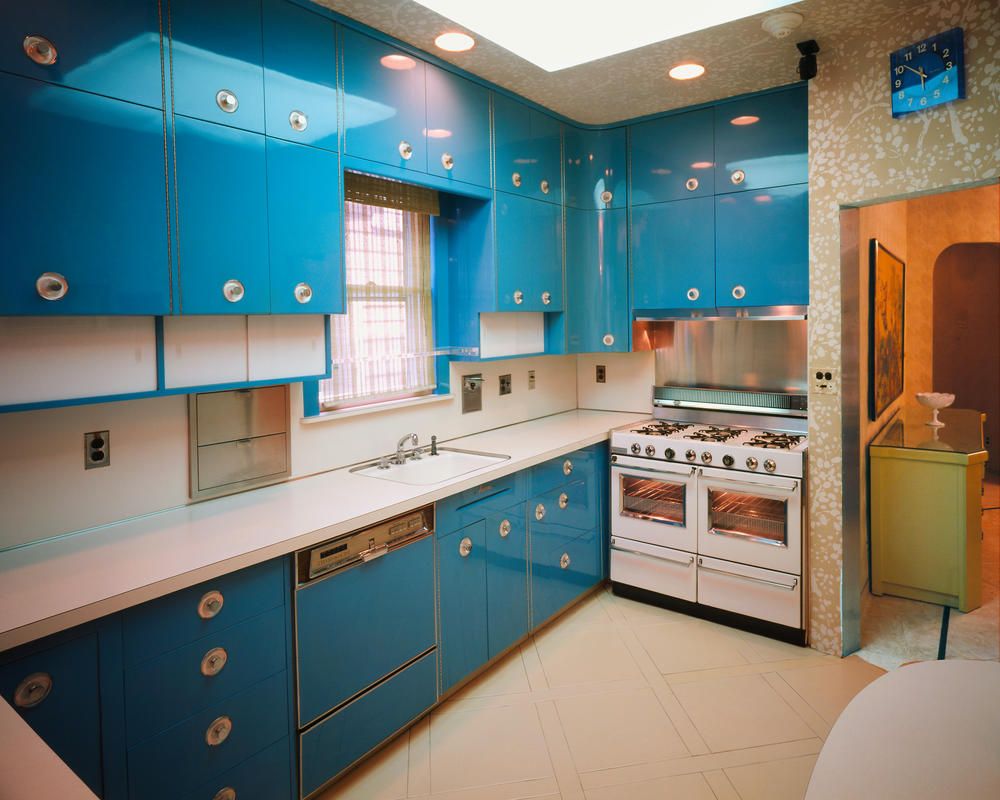
Louis Armstrong and his wife lived in this beloved home at 34-56 107th Street in Corona, Queens, in 1943. Now the Louis Armstrong Museum, the home and furnishings are said to be well-preserved from when the Armstrongs lived there. Archives include never-before-heard recordings of Armstrong’s music, and his secret reel-to-reel tapes where he talks about getting caught with marijuana and refusing to play music unless he can smoke without getting caught. Other gems include the den where he wrote letters, the mirrored bathroom, and the gorgeous Japanese-inspired backyard garden.
Amstrong has said that when he thinks of his famous song “What A Wonderful World,” he remembers his time here in his beloved home in Corona. It was the only place where he felt he could be himself when not performing for concerts, retreating to simple pleasures such as playing his saxophone outside for neighborhood children.

The Leslie-Lohman Museum of Gay and Lesbian Art, located at 26 Wooster Street, is the first of its kind in the world. The exhibitions showcase documented artwork from diverse worldwide LGBTQ+ artists. The museum’s roots began in 1969 when founders Charles Leslie and Fritz Lohman held the first exhibit of gay artists in their SoHo home. During the HIV/AIDS crisis, they continued to support gay artists suffering from the disease by saving their art from being thrown out by families. In 1987, they formed the Leslie-Lohman Gay Art Foundation. The museum became accredited in 2016 after organizing and preserving LGBTQ+ art, history, and its correlation with social justice.
When going inside, there is a sense of humility, wonder, and gratitude. The OMNISCIENT exhibition, for example, displays visual art from 40 different worldwide artists. Each of their artworks tries to identify how the queer community can identify themselves in the digital age through reconnecting with past Hollywood and Disney archival visual oddities and beauty. Admission is free, but any donation amount is appreciated.
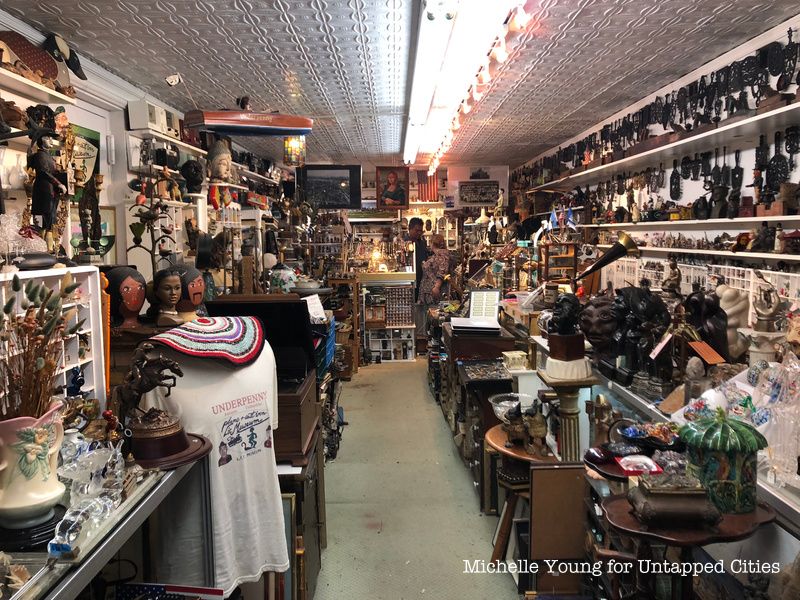
What makes the Underpenny Plane and Cast Iron Museum one of the coolest museums in New York is that it’s half a museum and half an antique store. Undsung Park from South Korea owns and curates the museum, having lived in Queens for 22 years. Located at 10-30 5th Avenue, the spot showcases his collection of more than 15 years of 19th-century artifacts including hand planes, trivets, toys and penny banks. The only antiques for sale are on the left side of the space, while any antiques located on the right side are for exhibition.
The museum is located underneath a tenement house in a basement. Park collected his antiques from New York, Ohio, Pennsylvania and New Jersey with trinkets like “ornate penny banks, cast iron trivets, bells, bookends, wood planes, and horse-and-carriage toys.”
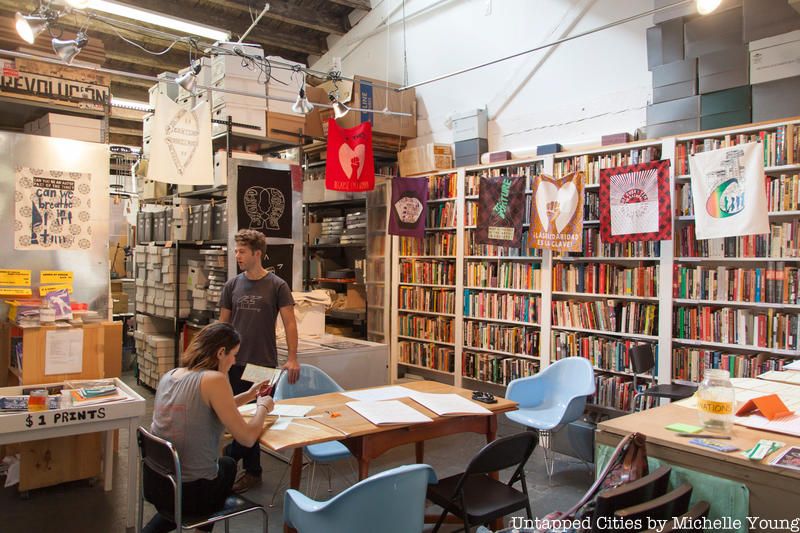
There’s not quite an archive in Brooklyn like the Interference Archive, a volunteer-run library and gallery of historical materials related to social and political activism and movements. The materials here include clothing, books, periodicals, flyers, stickers, games and videos dating back many years ago. The room is just 725 square feet in a warehouse building and began as a personal collection of Josh MacPhee and Dana Greenwald.
Since it opened to the public, the archive has held annual exhibitions and events and receives continuous donations from the community. The library contains materials about global topics from peace movements and anarchism to bike advocacy, punk feminism, white supremacy, and the Tea Party. The volunteer-run space is at 314 7th Street in Gowanus.
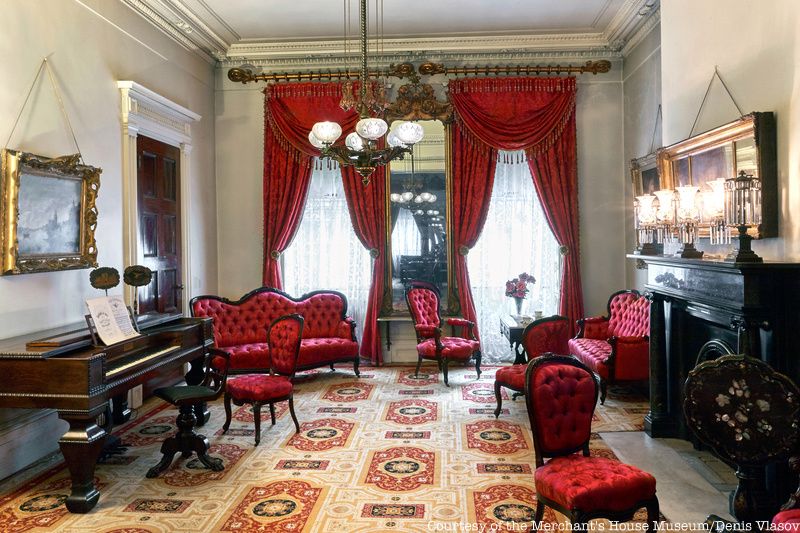
A unique gem lies tucked away on East 4th Street. The Merchant’s House Museum is the only 19th-century preserved home with original furniture, plaster, and clothing in New York City. Once belonging to the Tredwell family in the 1800s, The Merchant’s House gives an inside look into life for the wealthy merchant family and their Irish servants. The tour begins with an introduction to the gorgeous renovated garden at the back of the house. The Merchant’s House was purchased by wealthy merchant Seabury Tredwell in the 1800s. He and his wife lived in this home with their seven children for nearly 100 years until the early 1900s. His daughter Gertrude, the eighth and last child in the house, was born and also died here at 93 in an upstairs bedroom. It is said that the house is haunted to this day from Gertrude’s presence.
Entering the home is like entering another time dimension, from the mahogany wood furniture to crystal knobs to the beautiful intrinsic plaster above the chandeliers in the family room. Perhaps the most intriguing part of the museum is the servants’ quarters, featuring bells that hang on the walls for the servants when they were called upon. Tourgoers can also lift a bucket of coal with signs letting them how many steps the servants had to carry it upstairs. However, the museum is in danger of closing, but Candlelight Ghost Tours may return in October. You can also donate by telephone at 212-777-1089 or online.
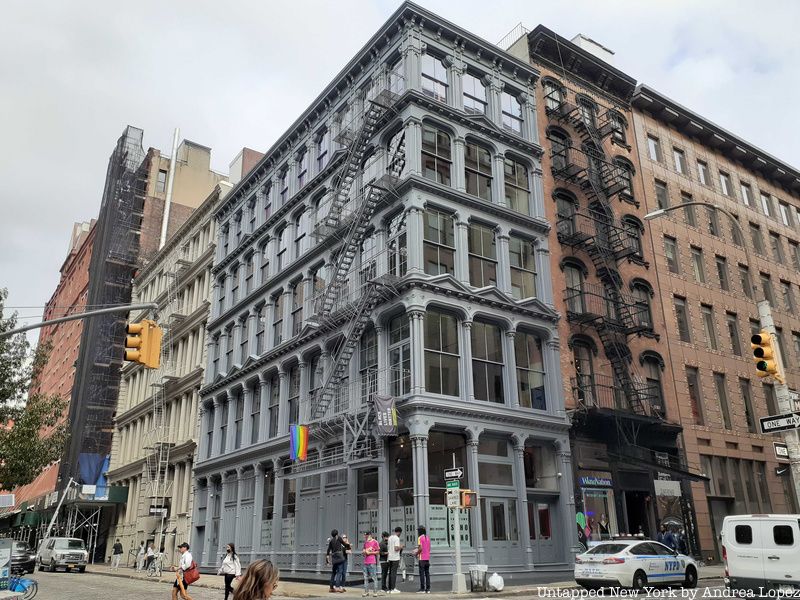
Donald Judd was a significant artist of the 20th century known for his “radical” approach to architecture, design and art. The Judd Foundation is the personal home of the artist’s private libraries and archives. After serving in the United States Army in Korea, Judd attended Columbia University for philosophy and art and the Art Students League for painting. He also wrote many art reviews per month and, in the 1960s, began painting three-dimensional artworks,. Judd conceived the Foundation in 1977 and created it in 1996 to preserve his work, installations and living spaces that expand over 22 buildings.
In 2013, Judd’s children opened the 101 Spring Street building in Soho to the public. Judd also believed that a work of art’s placement was just as crucial as understanding the work of art itself. His artwork alone has been in hundreds of museums all over the world. He also wrote about the importance of land preservation, empirical knowledge, and engaged citizenship. Visitors can experience a tour inside the artist’s understanding behind his work in these installations. Guided tours at 101 Spring Street.

It’s not very often we encounter museums where we can utilize all our senses. The concept behind an institution dedicated to food and drink, The Museum of Food and Drink, came from founder Dave Arnold. Then in 2013, the museum’s first exhibit, BOOM! The Puffing Gun and the Rise of Cereal was born, with a 1930s-era cereal puffing gun touring around the city. The museum gained more support to follow, especially after keeping the MOFAD Lab active with touring school programs and other pop-up exhibitions.
The museum offers intriguing discussions with historians such as Making It Here: A Local History of Flavor, such as how the first Oreo was developed at Chelsea Market since it used to be a factory complex for Nabisco. What’s also intriguing is the museum emphasizes looking at the importance of immigration and other cultures behind the foods we eat, such as their menu for “Chow.”
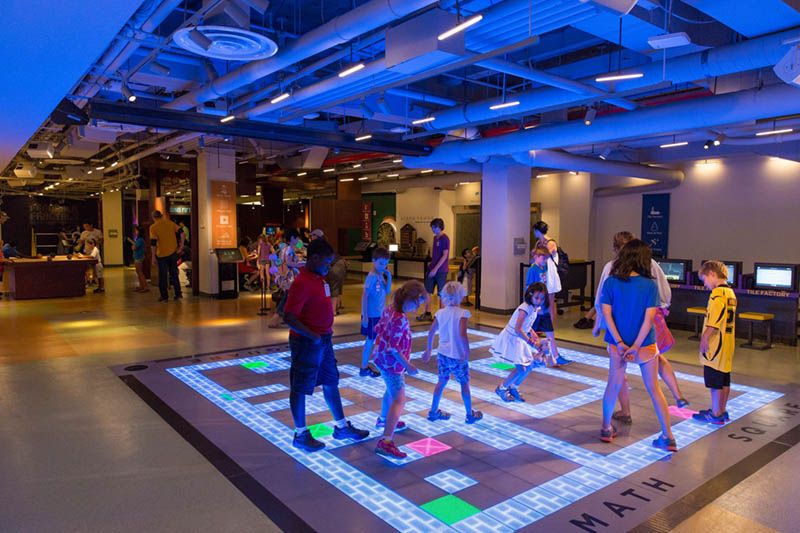
The National Museum of Mathematics enhances our knowledge of mathematical patterns through engaging exhibitions and programming. An interested party known as “the working group” decided to open the museum in 2008 after closing Long Island‘s Goudreau Museum, a small museum dedicated to mathematics. This group wanted to go above and beyond what the Goudreau did and included more hands-on programming, considering there was no other mathematics museum in the United States.
Since its opening, MoMath has brought in over a million international guests. It opened Manhattan’s only hands-on science center, leading Math Encounters and Family Fridays events, and setting up extensive exhibitions on the beauty of math. MoMath has also created the largest public outdoor demonstration of the Pythagorean Theorem ever. The museum is now considered an official educational charter in the state of New York. MoMath is located at 11 East 26th Street.
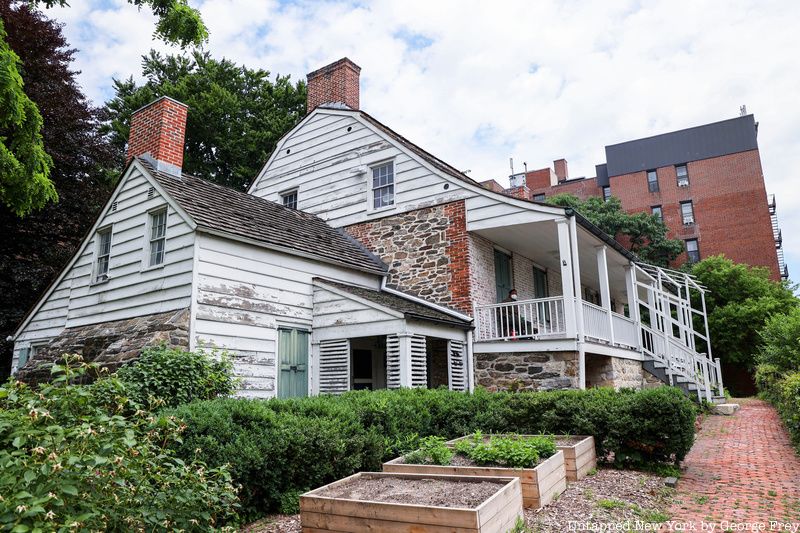
The Dyckman Farmhouse is the only and oldest home in New York City and sits atop a hill at 4881 Broadway on 204th Street. This Dutch colonial gem belonged to the Dyckman family, which arrived from Westphalia in the 1600s. During the Revolutionary War, the Dyckman Farmhouse had been in part destroyed. Jacobus Dyckman, son of William who inherited the land, later took over the farmhouse and continued working on it over decades, also transitioning the home from enslaved to free. The early 20th century showed a rapid change in New York, leading to the destruction of many farmhouses. In 1915, daughters of Isaac Michael Dyckman (the last child to grow up in the farmhouse), Mary Alice Dyckman Dean and Fannie Fredericka Dyckman Welch, repurchased the home.
In 1916 the family refurnished the home and opened it to New York as a museum, retaining much of the furniture. Also shown at the farmhouse were exhibits on the family’s history of enslaved people working in their home and art installations drawing focus on what the servants’ life entailed. Access to their beautiful garden is free, and visitors can see what life was like inside this humble abode for as little as $3 adult admission.
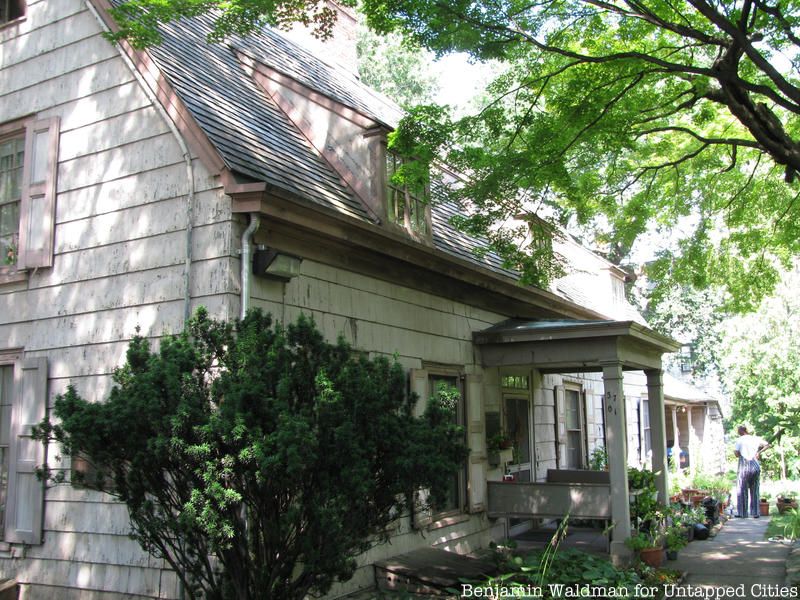
In 1945, a group of residents from Flushing known as the Bowne House Historical Society purchased the Bowne House, one of Queens’ oldest buildings, to preserve it as a museum. Before opening to the public, the Society had purchased it from the Parsons sisters, the last known residents. The house was built in 1661 by John Bowne, where he and his family later prospered. The museum is the only original Anglo-Dutch style structure of its kind. The museum, located at 37-01 Bowne Street, has at least 5,000 items belonging to the Bowne and Parsons families from the 17th through 20th centuries, including costumes, furniture, toys and manuscripts.
Besides preservation, the fight for religious and racial freedom was also very prevalent; John Bowne was a Quaker, and he was arrested for practicing his religion in this home. The Parsons family helped expedite freedom for enslaved people while in this house. The experience allows one to take a step into what it was like to live in a familial home in New York so long ago. Visitors must schedule in advance to tour the house.
Subscribe to our newsletter